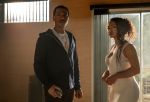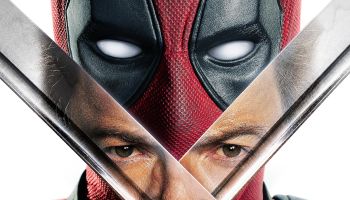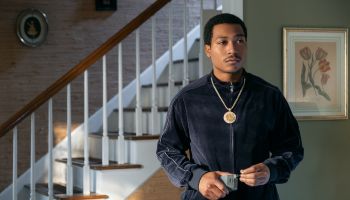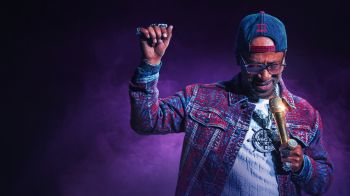In 2012, two filmmakers set out to unearth America’s hidden holocaust against its own people — The 1921 Tulsa Race Riots.
A large-scale, racially-motivated attack on a wealthy African-American area of Tulsa, the riot left 10,000 blacks homeless, 35 city blocks composed of 1,256 residences destroyed, and a community with emotional scars that have scabbed, not healed, in the near century since the incident.
The result, a film titled Hate Crimes In The Heartland, reveals the extremes of racial tension in America’s heartland, told through the eyes of survivors of the 1921 Race Riot and the 2012 “Good Friday Murders.”
Through the personal accounts of survivors, witnesses, journalists, and lawmakers, Hate Crimes in the Heartland enriches the public understanding of the underlying tension in America’s heartland, exposing injustices that occurred and giving a voice to those whose perspectives would otherwise remain unheard.
GlobalGrind and Hate Crimes in the Heartland producers Rachel Lyon (right) and Pi-Isis Ankhra (left) are partnering to explore America’s holocaust in an attempt to discuss and tackle current race relations in America and on Friday, the two sat down with GG to discuss making the film and the call to action the audience will be charged with after viewing.
Race, racial disparities in communities like Tulsa and hate crimes aren’t novel to America. But what compelled you to tell this particular story?
Rachel Lyon: While racial tensions are a problem throughout the United States, Tulsa has some unique elements that cry out for a story to be told. For one thing, the 1921 Tulsa Race Riot was very well documented, thanks to the African-American community and press. Many of the other post-WWI race riots happened literally in the dark, with communities unable to ‘show’ what happened.
Also, the sheer scale of the riot – with up to 300 dead, 10,000 homeless and 35 square blocks of Black Wall Street burned to a cinder – it is a story that needs to be told. Something really bad happened in Tulsa – in a community that once had one of the first upper-middle class and wealthy black communities flourishing. What compelled me to start the film two years ago was also the difference in how Tulsa handled the situation of 2012. The police worked hand in hand with the black community, including leaders such as Jesse Jackson, to see that the offenders were caught and that justice was done. Major progress for a city with a deep stain of shame.
Pi-Isis Ankhra: The story of what happened in 1921 and then again in 2012 in Tulsa provides us a platform to address race in America. The story of Tulsa, while layered and unique within its own right, is a story about every community in America.
There are few places in our nation that haven’t experienced a similar race riot, or ethnic cleansing, but we’ve not ever truly addressed it as a country, let alone a community. At best, we’ve passed on the oral history in our families, which has either built a sense of guilt or shame that has perpetuated a lack of self-worth for each other and ourselves. Couple this with how we use race as a tool to disenfranchise communities of color – and it becomes a ticking time bomb – where some lives are valued more than others, resulting in countless and senseless acts of violence.
Each act of violence is rooted in so much more than what we assume it to be. When we undervalue certain communities, then we often project our greatest fears and ignorance onto them. They get the shortest end of the stick and it’s a system we’ve built, but one we are rarely accountable to.
We talk about context, how the Tulsa Race Riots of 1921 and the Good Friday murders are connected. What other connections can you make between Tulsa and crimes today and why does that connection exist?
RL: The Good Friday murders happened about three weeks after the Trayvon Martin case exploded into the media. They were handled so differently by the media it was incredibly important to show this difference. While civil rights leaders went down to Florida to push for action against George Zimmerman, he remained free for 41 days. In Tulsa, when Jesse Jackson came down, the media focused on the united effort to hunt down and find the shooters of these three victims.
Another important point is that the media plays a very mixed role in portraying blacks and covering crime. The ‘crime-media business’ is a $4 billion dollar a year industry, which mostly covers whites as victims and dark people as perpetrators/criminals. In fact, both in the Michael Dunn case and in the Trayvon Martin case, the media portrayed the victims in ways that made them suspect – thus the ‘hoodie’ marking Trayvon as a criminal type – and Michael Dunn’s assertion that the four black men were armed, making it self-defense to start shooting.
PA: The film explores the collateral damage of hate crimes in both black and white communities. When you watch Hate Crimes in the Heartland, there’s a moment when all of the pieces fall into place. When you hear/watch the story of what happened in 1921 – one of our most prosperous communities in the country owned and operated by Black Americans decimated in an instant, lives lost and destroyed. Then you fast forward to 2012 and see the economic disparities between the black and white communities – the injustice becomes clear. You see the connection immediately. The way in which the story unfolds allows you to truly understand that Hate Crimes in the Heartland tells the story of hate crimes in America – that racial violence and injustice is not simply a black issue, it’s an American issue that impacts us all.
What surprised you most about the making of this film?
PA: What surprised me most about the voices and perspectives profiled in the film is the great range of experiences we have in America. It’s clear that race continues to be an issue that everyone deals with in their own way. For some, racial identity and racial violence simply isn’t their reality. Once you realize that’s a very real starting point for some of us, then it’s easier to understand and accept this diversity. We’re all coming to the table from a distinct and unique perspective, so understanding, dialogue and reconciliation will look different for all of us. For some, it will be simply to access a level of empathy and compassion for the death of a child, while others will be implored to take action to stop it. As long as there is some shift in our thinking and behavior, we’ve done our job.
RL: What surprised me the most about making the film was how open and welcoming the people in Tulsa were. They wanted to talk about the riots in 1921 – white and black – they want to get beyond the past.
What shocked you? Angered you?
PA: What angers and quite frankly fuels the motivation to bringing the film to as many people as possible is the reality that people continue to lose their life, youth and dignity today, as they did then due to the color of their skin. It’s time for this epidemic to stop.
RL: What shocked and angered me the most was how widespread killing black men is in America and how often little or nothing is done in the way of justice.
On the other hand, did any of it give you hope about race relations in the nation?
RL: In spite of hate-radio and the loud noises being made by those on the right, the country is really changing and it’s the young generation, the folks on this website, that are making the change. We are no longer a majority of whites and when people calm down about that, we will truly have one of the most vibrant democracies in the world.
PA: I agree. There is great hope for change and reconciliation. First of all, the hate, fear and ignorance that lives in America is such a small demographic, but we’re of the belief that it’s the majority of us. That’s not true. What we see online and in person is common ground. Identity, especially for the younger generation, doesn’t necessarily begin with color -sometimes the starting point is culture. These commonalities provide a platform for unity and peace.
This isn’t art for art’s sake, this is didactic. What’s the call to action from this film?
RL: People ask us at the end of screenings or after watching clips online, “What should we do?” We are working with elected officials to find a viable petition to strengthen the teeth of hate crime laws. Additionally, we are asking people to go to their public television stations and ask for the film to be shown. Finally, we are asking people to get online and tweet and talk about the film from the website and other social media – to get and keep a sustained dialogue about media, race, crime and punishment in our country.
PA: What Hate Crimes in the Heartland does is unearth the root so we can finally address it and make sense of these heinous crimes in some way. Our goal in telling this story is to provide a greater understanding and accountability, because without understanding what motivates these senseless acts, we’ll never change it.
The film and discussion are a timely one that resonates with people in different ways – it evokes a broad range of emotions, from anger to enlightenment. We’ve had individuals approach us in tears – thanking us for bringing these untold stories to the forefront. What seems to be the most sobering is the film’s ability to provide a better understanding to the most recent hate crimes of our time. There have been countless requests to continue the tour and dialogue throughout the nation. Many of which Rachel addressed.
What we know for sure is that we have an opportunity to leverage Hate Crimes in the Heartland as a tool for social change around this very important issue in America – race. The only way we can do that is by building a coalition of people who are committed to making a difference to stop the hate. We’ll continue our work – the call to action is clear – keep going.
Our call to action, in kind, is to join us – become a part of this growing campaign – join us on Facebook and Twitter and spread the word. This is how we truly make a difference we all seek – we must stand together.
For more information on Hate Crimes In The Heartland, click here. To follow the producers as they embark on a national tour to explore the foremost social justice issues through the media, with stories that inform and inspire audiences and promote social progress, follow their Twitter account here.
VIDEO SOURCE: Hate Crimes In The Heartland

















